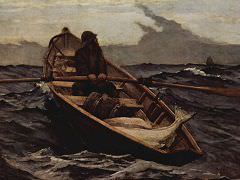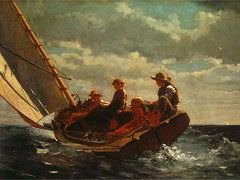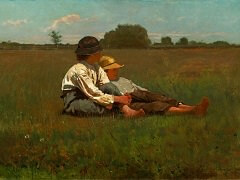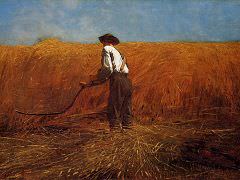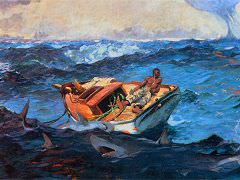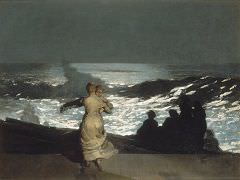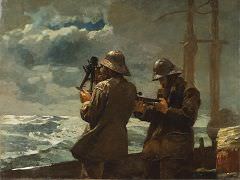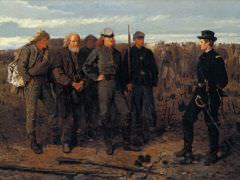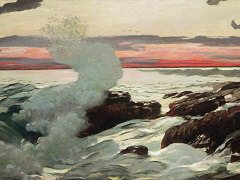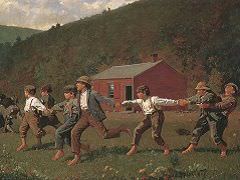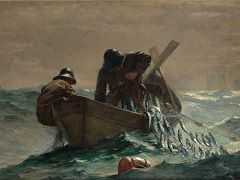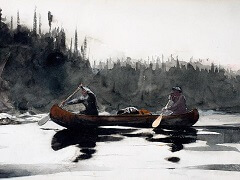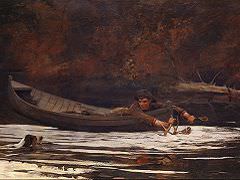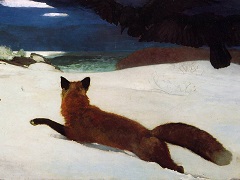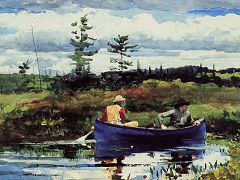The Woodcutter, 1891 by Winslow Homer
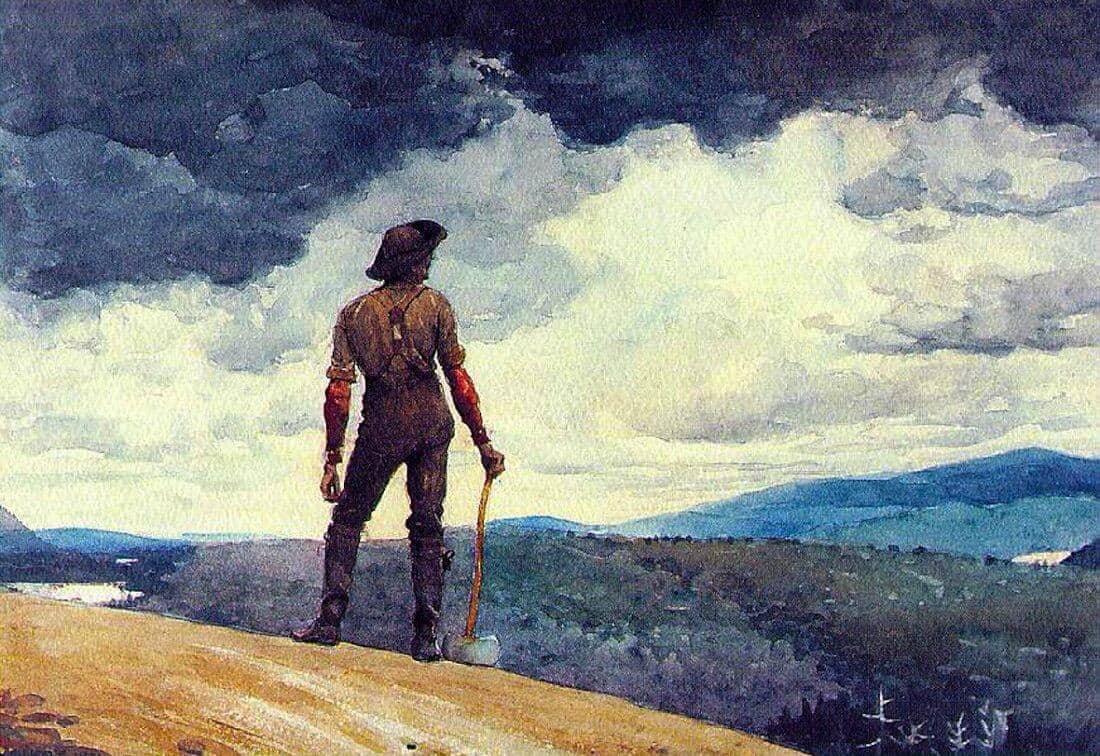
Homer spent several months during the summer and late fall of 1891 at Houghton Farm, the country residence of a patron in Mountainville, New York. There he created dozens of watercolors of farm girls and boys playing and pursuing various tasks, including The Woodcutter. Painted quickly and often outdoors, these watercolors present idyllic scenes of rural life that follow in the European tradition of pastoral painting.
Homer had been working as an artist for nearly two decades when, in the words of one contemporary critic, he took "a sudden and desperate plunge into watercolor painting." Long the domain of amateur painters, watercolors had gained professional respectability in 1866 with the formation of the American Water Color Society. Homer recognized their potential for profit - for he could produce and sell them quickly - but he also liked the way watercolor allowed him to experiment more easily than oil.
Some critics found fault in Homer's early watercolors for their apparent lack of finish and their commonplace subject matter. Yet Homer valued them from the start. The Woodcutter, is a delicate work that demonstrates his technique of filling in outlined forms with washes of color. The size of this watercolor and its highly finished state suggest that Homer was attempting to create what English artists called "exhibition watercolors" - works that were intended to rival the aesthetic power and impact of oil paintings.

